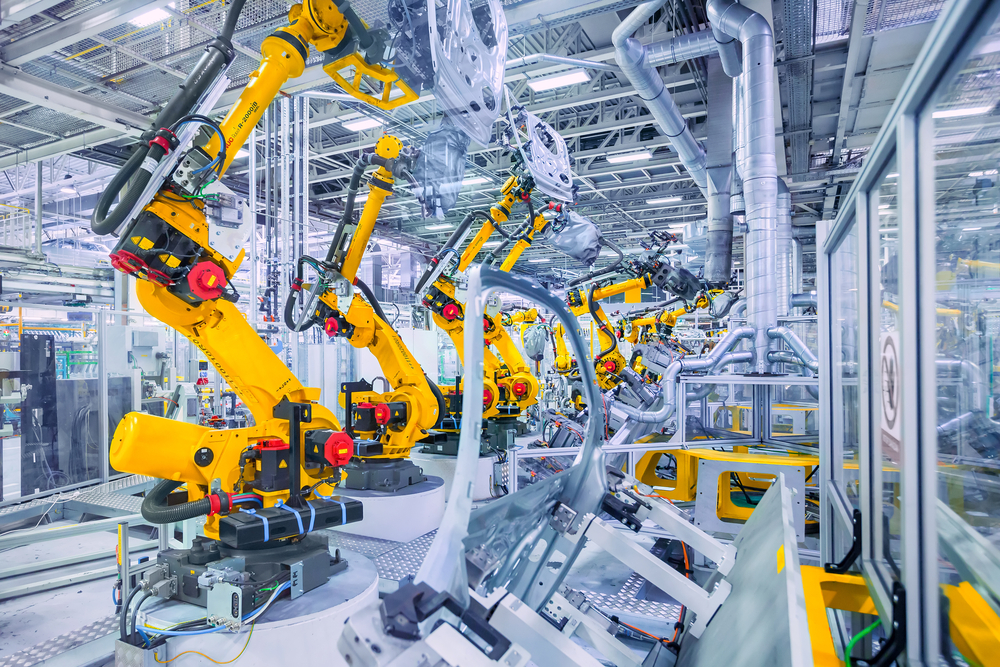Fears about job loss and human obsolescence continue to consume the cultural imagination, compounded by ongoing strides in artificial intelligence and machine learning. The job-killing robots are almost at the door, we are told, mere moments away from replacing the last traces of human inefficiency and heralding the dawn of a world without work.
Such fears are nothing new, but up until recently they’ve been somewhat easier to dismiss. If we recount the major economic transitions of ages past, grand improvements in automation have not led to widespread unemployment. On the contrary, new technology has tended toward greater growth and opportunity, creating far more jobs than it destroys. It’s a story we have long taken comfort in: Economic disruption is an inescapable part of creative destruction, and when we have the patience and perseverance to adapt and see things through, it’s bound to benefit all.
Yet, according to research by M.I.T.’s Daron Acemoglu and Boston University’s Pascual Restrepo, something seems to be shifting. Employment growth has started to gradually slow relative to accelerations in automation, beginning some time around the turn of the century.
“We estimate stronger displacement effects and considerably weaker reinstatement effects during the last 30 years than the decades before,” write Acemoglu and Restrepo. “These patterns hint at an acceleration of automation and a deceleration in the creation of new tasks. They also raise the question of why productivity growth has been so anemic while automation has accelerated during recent years.”
But it depends on the type of automation we’re talking about. Whereas we tend mostly to conjure up fears about large, looming robots that consume entire industries, these may, in fact, be the “friendlies.” The more pressing challenges seem to stem from what Acemoglu and Restrepo describe as “so-so automation”—moderate, halfway automations that manage to coexist with human laborers somewhere in the mundane middle.
“In contrast to some popular discussions,” write Acemoglu and Restrepo, “the new AI and robotics technologies that are more likely to reduce the demand for labor are not those that are brilliant and highly productive, but those that are ‘so-so’—just productive enough to be adopted but not much more productive or cost-saving than the production processes that they are replacing.” While plenty of new automation continues to pave new paths for human productivity, these “so-so” automations are not “sufficiently productive to bring about powerful productivity effects.”
AEI’s Brent Orrell explains the difference as follows:
For instance, GPS technology improves truck-driver efficiency, allowing more deliveries in less time and broadly raising economic productivity.… A self-checkout machine at a grocery store, on the other hand, eliminates one kind of routine work—a grocery clerk—and substitutes “free” labor from customers.
This latter kind of automation, which we might call “so-so automation,” reduces but does not eliminate demand for low-skilled workers. Since between-firm competitive pressures force companies to reduce overhead by whatever means available, so-so automation is likely to proceed apace.
It’s a trend that poses unique challenges, both in how we transition and retrain the current labor force and in how we educate and empower rising generations. As Orrell observes: “It’s almost as if the virtuous cycle of education-skills-income that marked the American labor market in the twentieth century shifted into reverse: accelerating technological change driving more workers toward lower-skill jobs.”
But as we face those challenges, we needn’t wallow in pessimism, assuming all is lost and the automatons have already won the day. There is plenty of good work to be done, and as Acemoglu and Restrepo conclude in a separate study, the story of human creativity is far from over:
Our evidence and conceptual approach support neither the claims that the end of human work is imminent nor the presumption that technological change will always and everywhere be favorable to labor. Rather, they suggest that if the origin of productivity growth in the future continues to be automation, the relative standing of labor, together with the task content of production, will decline.
The creation of new tasks and other technologies raising the labor intensity of production and the labor share are vital for continued wage growth commensurate with productivity growth. Whether such technologies will be forthcoming depends not just on our innovation capabilities but also on the supply of different skills, demographic changes, labor market institutions, government policies including taxes and research and development spending, market competition, corporate strategies, and the ecosystem of innovative clusters.
We can rise to these challenges in any number of ways, but as Orrell concludes, our solutions ought to begin not with fear and protectionism, but with an intentional focus on human development: “Rather than fight technology or attempt to compete with it, we ought to be attending to human capital development—both technical and noncognitive—as the best way to reset the race between education and technology and restore the American economy as an engine of opportunity and prosperity for all.”
To do that we’ll need to reset our perspectives accordingly—particularly when it comes to how we view the human person. In a recent essay, Kevin J. Brown of Asbury University observed that much of modern society views the world through a “chaos narrative,” in which “beings that reproduce with superior qualities will outpace and outlive their less adapted counterparts.” Through such a lens, it’s no wonder we fret about an economy filled with servile humans who are cooperative and compliant with the blind strides of the bigger, broader “evolutionary machine”—human, robotic, or otherwise.
Brown suggests we adopt a different narrative, one in which humans are not powerless cogs, but “deliberately designed and uniquely created.” “We are spiritual beings,” he writes. “We are not simply the sum of our biological components. Nor does our value merely rise to the level of our economic productivity. We have a spirit; a soul.”
If we assume the chaos narrative, humans have little hope of competing with our robotic competitors in a massive, mechanistic economic regime. We are powerless against the “so-so automations” that nestle next to our workstations and outpace our every move. But through the lens of God’s creative design, we see the opposite: humans as protagonists in a bigger, more mysterious story of economic abundance.
Through this lens, we have humility toward the doomsaying and soothsaying of economic planners and predictors, but we also have a hope in the human person that prompts us to ask ourselves a different set of questions.
How can we, as creators and economic servants, continue to refine and reimagine our roles in this next iteration of the economic order? How can we adapt the work of our hands to complement new technologies and serve our neighbors even better than we currently do? How can we stay ahead of the curve in finding those places and spaces where our productivity surpasses the rising automations of the day, keeping our sights set not on our own economic security but on service to others?
We were made to bring a creative, hopeful vision to the economic order, and the challenges of “so-so automation” don’t change that one bit.

